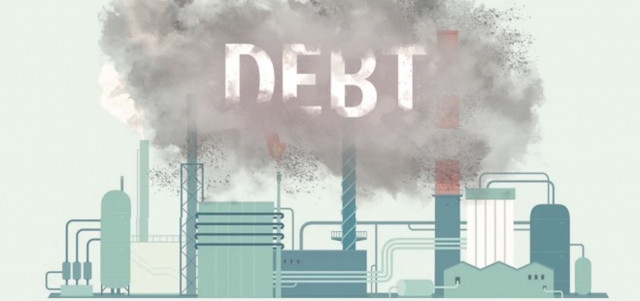Pakistan’s debt soars to record Rs81tr
Burden equals 3/4 of economy, surpassing statutory limit by 15%

Pakistan’s total debt and liabilities increased at a double-digit pace to a new record of nearly Rs81 trillion during the past year, as the country grapples with finding new sources of financing to meet its growing debt servicing needs due to junk credit ratings.
According to the State Bank of Pakistan (SBP), Pakistan’s total debt and liabilities surged by Rs8.4 trillion as of the end of March compared to the previous year. Consequently, the country’s debt and liabilities reached a record Rs81 trillion, with Rs4.4 trillion attributed to liabilities.
This burden now equals three-fourths of the nation’s economy and is approximately 15% of the GDP higher than the statutory limit defined in the Fiscal Responsibility and Debt Limitation Act.
The debt and liabilities increased at a rate of 12%, averaging Rs31 billion per day over the past year. While the pace of debt accumulation has relatively slowed down due to a stable exchange rate and the absence of major foreign funding despite the International Monetary Fund (IMF) programme, it remains concerning.
Compared to a year ago, the value of the rupee stabilised and even showed some improvement. This stability helped mitigate the increase in external debt, combined with low credit ratings that hindered foreign commercial banks from extending new loans to Pakistan.
Austerity measures introduced by successive governments have remained largely theoretical exercises without yielding substantial benefits. No government has implemented meaningful reforms to curb debt accumulation. The three mainstream political parties have faltered and seem unwilling to undertake the challenging path of debt restructuring.
The government of Prime Minister Shehbaz Sharif has approved supplementary grants to provide honorariums to officers of the Prime Minister’s Office and Defence Production. Additional funds have also been allocated for the renovation of the PM’s Office and for providing subsidies to Azad Jammu & Kashmir.
For the current fiscal year, the finance ministry initially budgeted Rs7.3 trillion for interest payments, which are now expected to rise to Rs8.3 trillion. The cost of servicing the debt cannot be reduced until the central bank lowers the key policy rate and the government negotiates with commercial banks for a reduction.
According to SBP data, the gross public debt, falling under the direct responsibility of the finance ministry, totalled Rs67.5 trillion by the end of March.
In the previous fiscal year, the federal budget deficit soared to a record Rs6.7 trillion, attributed to the expansionary and politically motivated fiscal policies of the PDM government.
This burden will persist until significant reforms are initiated, including reviews of provincial projects, winding up of ministries operating in areas now under provincial control, and addressing defence and debt expenses.
Public Sector Enterprises’ debt and liabilities reached Rs3.8 trillion by the end of March—a sum largely borrowed to finance their deficits. No government has taken steps to reform state-owned enterprises. The PML-N government has not yet finalised the list of entities it wants to retain or sell.
The external debt remained stabilised at Rs33 trillion over the past year due to the appreciation of the rupee against the US dollar and the lack of fresh foreign financing expected by the IMF and the World Bank. The central bank had to purchase around $6 billion from the open market to stabilise reserves, keeping the external debt around $130 billion during this fiscal year.
Pakistan’s external debt and liabilities climbed to $130.4 billion by the end of March, an increase of $3 billion in the last year.
The country’s debt from the IMF reached Rs2.2 trillion by the end of March, according to the SBP. The IMF is currently assessing Pakistan’s conditions before deciding on a new bailout package.
The federal government’s total domestic debt increased to Rs43.4 trillion, rising by Rs4.6 trillion or 12% in the past year.
The country spent Rs5.8 trillion on servicing the total debt—a figure that was Rs2 trillion, marking a 53% increase from the previous year.
The cost of interest payments exceeded the net federal income during this fiscal year.
Despite repeated commitments to the IMF and the World Bank, the country’s Debt Management Office is operating under capacity, and the Ministry of Finance seems disinclined to reinforce it.
Published in The Express Tribune, May 16th, 2024.
Like Business on Facebook, follow @TribuneBiz on Twitter to stay informed and join in the conversation.



















COMMENTS
Comments are moderated and generally will be posted if they are on-topic and not abusive.
For more information, please see our Comments FAQ